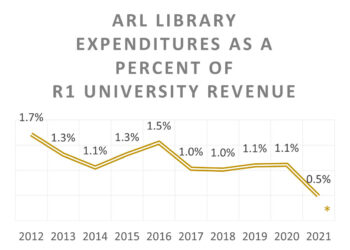
Soon after I posted on the Scholarly Kitchen about the inexorable path of the professional society publisher, I heard from Tim Elfenbein, Managing Editor for Cultural Anthropology, who said, no, no, there are independent options available to professional societies and Cultural Anthropology was pursuing one of them. Tim in turn put me in touch with Charles Piot, Co-editor of the journal, and Charles subsequently introduced me to Oona Schmid, director of publications for the American Anthropological Association (AAA). These 3 folks agreed to share information with me, and I agreed to allow them to fact-check anything I wrote. My conclusion: the inexorable path does in fact have many twists and turns and may at times run uphill, but Cultural Anthropology’s independent direction is something that societies should consider before throwing in their lot with the large commercial firms.
Let’s back up a bit and build some context. By the “inexorable path” I meant that professional society publishers, especially the smaller ones, are having a more and more difficult time navigating the marketplace today. The reason for this is the well-known situation in journals publishing, where library budgets are not keeping pace with all the new and growing publications offered to them, which in turn forces libraries to cancel subscriptions and to reduce spending on books. Smaller publishers are hit hardest by these straitened budgets, and they in turn begin looking for new strategies to get access to a library’s spending.
And thus the wayfarer sets out on the inexorable path. It begins with a small publisher contemplating giving up some of its independence, perhaps by recruiting a new and more robust clutch of suppliers to assist in Web hosting, production, and marketing. The next step takes the publisher to the embrace of the university presses that publish journals, which in turn leads to the biggest university presses, OUP and Cambridge, each of which can claim a global footprint and large journal programs (and which can credibly argue that they can go head to head with their biggest rivals). Some publishers stop there; others look to the large commercial firms, which, rightly or wrongly, promise unrivaled riches to their new recruits. Each step along this path has one object, to get access to the library’s flat or shrinking budget. The game is tilted in favor of the larger publishers because libraries, especially those organized in purchasing consortia, prefer to buy from large firms. The rhetoric would have you believe otherwise, but the demonstrated fact is that the money disproportionately flows to the largest companies, whose market share continues to inch up year by year.
Coincidentally, it was the AAA that got me thinking about this situation in the first place. Several years ago I was serving as an advisor to The University of California Press. Before I got involved, the Press had signed up the AAA to build a portal for the AAA’s portfolio of 20-plus journals; that portal, AnthroSource, was the pride of their journal program. In part because AAA wanted to reduce the hosting and production costs that were part of the UCP arrangement and in part because of the potential of greater income, AAA decided to auction the publishing rights when the California agreement came to term. John Wiley emerged as the winner. This raises the question of how a press the size of UCP could compete with the guaranteed income from a major commercial firm, and how can the relatively small scale of all but the very largest university presses (meaning, of course, OUP and Cambridge) provide an effective cost basis for their journal partners? It’s not as though UCP is a small operation; it is among the largest of the U.S. university presses. Thus we have the situation we see today: the drift away from the American university presses continues, with many important properties being picked off by larger firms (including OUP and Cambridge).
So the AAA started down the inexorable path. This was not without controversy within the AAA, as some members were uncomfortable with the unabashed commercial nature of the Wiley arrangement and others were advocating for an open access program. See, for example, Andrew Asher’s impassioned blog post on this topic, which is a bit over the top for me, but which may in fact be representative of the views of a number of members of AAA. On the other hand, Wiley is good at what they do and began to deliver significant income to the AAA, which in turn shared that income with its sections.
Rocky times were ahead, however. Anthropology publications do not command the same privileged market position as STM publications, and as library budgets tightened, cancellations begin to erode the income the AAA received. At the same time expenses began to rise. The principal factor for this was an outgrowth of the Great Recession, as universities began to cut back on release time for faculty to serve as journal editors. Thus the AAA had to begin to pay for that time, which cut into the shared income. In response to this deteriorating situation, the AAA commissioned a financial analysis, which was made available to all AAA members. That analysis showed that with current trends, the AAA publishing program would become unprofitable in a few years. AAA’s choices are stark. We should expect to see some strong executive action in the coming year or two.
With that analysis in hand, some members began to ask, If the sole reason we are with John Wiley is for the money, and the money is no longer forthcoming, is it time for a change? Which leads us back to Cultural Anthropology (CA).
The leadership of the Society for Cultural Anthropology section of the AAA pressed for a change; the goal was to make CA an open access (OA) journal. That is where things stand now, with the launch of the new OA journal scheduled for February 3. While CA will continue to remain part of the AnthroSource aggregation (and continue to share some of that income, though on modified terms), the individual journal has moved to an open access model. Which in turn poses a new set of issues.
Unlike its brethren in the “hard” sciences, anthropology is not rich with grants, which would pose problems for CA if it chose to fully implement a Gold OA model. The fees for PLoS ONE, $1,350 for an accepted paper, for example, are beyond the reach of many cultural anthropologists. According to the Web site, CA charges $21 for submission (not publication) for anyone who is not a member of AAA; if an author is a member of AAA but not of the Cultural Anthropology section, he or she must become a member at a cost of $42. Interestingly, the cost of membership in AAA is based not on the value of benefits but on the income of the individual (rich people pay more). However you slice it, the implications are clear: the new CA will have little revenue of the author-pays Gold OA variety and no toll-access income, and will thus have to keep expenses as low as possible, relying heavily on volunteer labor, membership fees, and support from third parties. (The principal third party in this instance is Duke University, where both co-editors are members of the faculty. Duke is providing Web hosting services.) To which I say: if CA can pull this off, more power to them. But volunteer labor is notoriously hard to find and motivate and after a while people simply become tired. Nor is it transparent how much this is costing Duke, what the long-term commitment will be, and how new investments will be funded for enhanced features. It may be that the Cultural Anthropology section is close-knit and committed to this model, and that commitment can make all the difference. We shall see.
As I began poking around CA, I learned that the Cultural Anthropology section had a rule that research must be shared with the populations studied (this point is made in Andrew Asher’s blog linked to above). This is not the only reason the society wants OA (there is an interest in reaching a readership beyond the walls of the academy), but it does mean that ethical and cultural issues are intertwined with finance. Fair enough. But this seems to have led to a non sequitur: Since we have to share our research with the people we study, therefore our publications must be open access.
Well, two points here: first, the research and the formal publications are two separate things (though this point is confused just about everywhere nowadays). Second, there are many ways to share publications (or research); using OA in this way is something of a blunt instrument. I cannot shake the feeling that this section wants OA for the sake of OA. That’s a society’s prerogative, but it’s not a compelling argument.
On the other hand, what kind of argument can be made to charge for access when there is insufficient demand to pay for the cost of publication in that way? And demand is the underlying issue. To a researcher or student based at an institution that subscribes to a publication, access is not an issue; for all that individual knows, the content of the publication is open access. If that institution reports high demand for the publication (by “high” I mean greater than the demand for other publications that the institution could license), then the subscription would not be dropped. Demand drives the marketplace, and it is weak demand that has put AAA into the situation it is in.
Weak demand is not the same thing as no demand, however, and here an OA model could work rather nicely. Researchers in the field need to read the work of their peers, and they don’t necessarily need all the trappings of the formal, traditional model to share that material, a point I have made before. By reducing the cost structure of the publication (the journal is being hosted on a free open source platform), appealing to volunteers, and eschewing some of the features of the processes associated with many of the “name” journals in academic publishing, CA could make this work.
This is where I think it is necessary to address the fundamental paradox of open access. If there is insufficient demand within the academy to support a publication, why would there be sufficient demand outside the academy? And if demand is greater outside the academy than within it, why is this research activity resident in the academy in the first place? Open access does not alter demand; it potentially alters the satisfaction of demand.
However valuable CA’s strategy may be for itself, what it is not is a model for other journals. There may be a few that can make this work; the critical success factor is the willingness of volunteers to shoulder the effort and a community, including a university host, to support it. But a model in the sense I am using the term, means something scalable, as the traditional publishing model is, where publishers identify the most desirable fields and seek out the most highly regarded authors and then charge readers for this process of investment and editorial oversight. CA is pursuing a community-focused niche model, and more power to them if it succeeds.
In the end, though, I am left with this question: Whose business is it anyway? Not every enterprise has to scale, not every shop on Main Street needs to aspire to be Wal-Mart. The Cultural Anthropology section of the AAA has made a decision that feels right for them. Who am I or anyone else to tell them how to conduct their own affairs?
Discussion
12 Thoughts on "When Professional Society Publishers Take an Independent Path"
I’m not sure why Joe thinks “volunteer labor is notoriously hard to find and motivate.” In fact, it is the way practically every journal in the humanities has been run for many decades. We published a dozen such journals at Penn State Press when I was director. We paid no money to the journal editors or staffs, we paid no money to support the managing editor or editorial office, and the turnover of journal editors was very slow; some editors served for decades. The model that Cultural Anthropology is following was the norm, not an outlier. In an age when it is possible to dispense with print costs altogether for journals and use open-source systems like the OJS, it should not be all that difficult to run an OA journal with voluntary labor at relatively low cost.
I think Joe also simplifies the analysis by disregarding Project Muse and JSTOR, focusing instead only on large individual university presses like OUP and CUP. Project Muse is an aggregation of mostly small and medium-sized presses, and it has been very successful in allowing those presses to transition to e-journal publishing. Our income at Penn State increased after joining Muse even while print subscriptions continued to erode, and the journals program overall provided a nice internal subsidy to keep the monograph publishing program afloat.
One obstacle specific to Cultural Anthropology that Joe does not address is the international movement under the auspices of WIPO to create a new legal IP-like regime to protect “traditional knowledge”: http://www.wipo.int/tk/en/. This may prove a greater obstacle to CA’s effort to make an OA model work than any purely economic constraint.
Yes, there are actually thousands of free journals that run on a low budget basis. Jan posts a list of these here periodically, including recently. Not that the subscription journals want to go that route.
But I’m talking about subscription journals, David. All of our journals at Penn State were subscription journals. I’m making this claim generally about journals in the humanities, and it would apply to a large swathe of journals in the social sciences also.
Interesting post, thanks Joe. However, I think it’s generally true to say that finances, while important (sometimes critically so), are often not the only reason for associations to partner with large commercial and university presses. Expanding the reach of their journals is also very important to most societies and is one of the main benefits these sorts of partnerships offer, with publishers such as Wiley typically increasing the number of libraries with licensed online access to a society’s journals by a very significant amount. This was certainly the case for AAA, since UCP’s institutional sales penetration was very much lower than ours.
Indeed Alice, in fact it seems that despite flat budgets the number of journals per library has grown dramatically. See for example page 8 of
http://www.stm-assoc.org/2012_12_11_STM_Report_2012.pdf.
I imagine this is true for the number of libraries per journal as well.
I find it interesting that AAA have chosen to charge on submission, rather than acceptance, and, what is more, have coupled submission charges with membership. If successful, this could be a workable model for subject areas that don’t command the level of funding common to the STM sector. It’s definitely a case to watch very closely.
“The fees for PLoS ONE, $1,350 for an accepted paper, for example, are beyond the reach of many cultural anthropologists.”
But there is the possibility being the fee being waived.
I wanted to clarify one point in Joe’s post. Cultural Anthropology‘s submission policy is aimed at two different author communities: members of the American Anthropological Association (AAA), and those who are not (mainly authors outside of North America). If an author is a member of the AAA, we require that he or she become a member of our section, the Society for Cultural Anthropology (SCA) ($42 per year). If an author is not a member of the AAA, he or she must pay a submission fee ($21, the equivalent of half an SCA membership).
The submission policy was put in place for a number of reasons. For instance, the policy has helped to reduce the number of time-consuming frivolous submissions we receive each year. We don’t expect the fee will generate a significant revenue stream, so we haven’t really through of it as an APC. It has led to the modest growth of our membership roll. The most important reason for implementing the policy is for the relationship we are trying to establish with our authors: in effect, we are saying, “If you want to benefit from the work of the SCA, you need to materially support its efforts.” Notice, we are not asking authors to pay for the services they receive but rather to support the society. This is the same argument we must make to readers and everyone else who might want to see our journal, website, and other society programs continue. The benefit we are selling is not access to the journal, but a channel for the public dissemination of a specific kind of anthropological research. The closest analogue for this model is the NPR-style, privately-supported public good.
This is quite obviously not a model for all scholarly journals, or even all HSS or society journals. This model might only work for a few publications and we are a long way from even showing that it will work in our case. I do feel that our experiment in funding models for journal publishing is significant for testing demand, but in a way that Joe is not discussing. It wasn’t that long ago that scholars took on much more of the burden of funding the journals they read. The digitization of scholarship led to the precipitous drop in individual subscriptions as readers changed their reading habits and points of access, leaving academic libraries as the primary source of revenue for publishers. We might look at Cultural Anthropology as a test case of whether a journal can convince scholars to once again take on a larger role in funding the publications they value.
The move by CA is a good one.
I co-run the anthropology/social science journal, Journal of Political Ecology (http://jpe.library.arizona.edu) , which has been online OA since 1994. It is kindly hosted by a university Library (Arizona) not a university press. This may be possible as an alternative for other journals too, since the security of hosting is there, without the need to go commercial. Hosting requirements have not yet incurred charges to the journal, and of course we have less years of material to post than CA and probably less production charges (2 people editing using Word and PDF !). Other AAA journals would probably have similar situations to our own and could consider this.
But for own model to work (no fees at all) the editors need to be willing and able to do journal work in and around their regular jobs. Universities have not quite woken up to this need, yet, but it is slowly dawning that the political economy of academic publishing has changed, and this alters scholarly labor patterns too.
We could ask authors to join the Political Ecology Society of the SfAA on submission of their paper to the journal, since it is a sponsor. However the authorship is truly global and not always of the type that are able or willing to make those kind of transactions to a US based society.
I think all these initiatives (hosting, OA) are chipping away slowly as a model that is, currently, commercial and unequal. It is not a redundant model yet – after all, people can always email the author of a paper behind a firewall to get a copy – but I have noticed that even in the social sciences, even this small step is too slow for the internet generation. Online journals meet their needs, and this increase readership. There is evidence to support that, referenced here. http://simonbatterbury.wordpress.com/2012/12/07/158/


